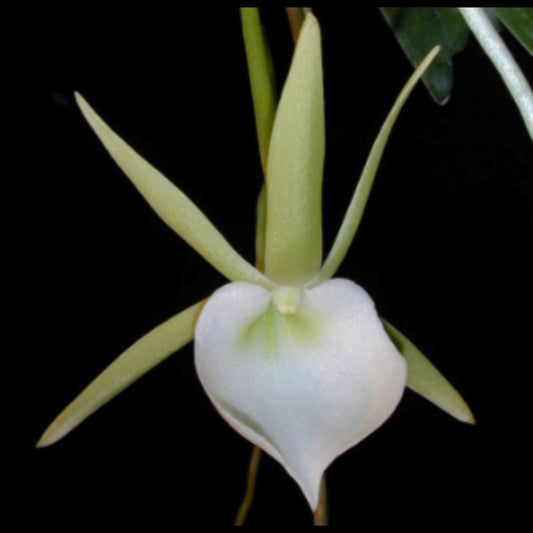
The Enchanting World of Orchids: Exploring their History, Biology, and Cultivation
Orchids are one of the most diverse and fascinating families of flowering plants in the world. They are known for their unique and intricate blooms, which come in a wide variety of shapes, sizes, and colors. With over 25,000 species, orchids can be found in almost every corner of the globe, from tropical rainforests to arctic tundra. In this blog post, we will explore the world of orchids, including their history, biology, and cultivation.
History of Orchids:
Orchids have a long and storied history, dating back thousands of years. In ancient Greece, orchids were associated with fertility, and were often used in medicinal remedies. In China, orchids were highly prized for their beauty and fragrance, and were considered a symbol of wealth and refinement. In fact, the ancient Chinese were so enamored with orchids that they created a special art form called "orchid poetry," which celebrated the beauty and grace of these remarkable plants.
Biology of Orchids:
One of the most interesting aspects of orchids is their unique biology. Unlike most flowering plants, which have five petals and five sepals, orchids have three petals and three sepals. The central petal, known as the lip or labellum, is often highly modified and serves as a landing platform for pollinators. Many orchids have evolved elaborate mechanisms to attract and reward their pollinators, including mimicking the appearance and scent of female insects, producing nectar rewards, and even exploding in order to fling their pollen onto visiting bees.
Cultivation of Orchids:
Orchids are a favorite of many gardeners and horticulturists, thanks to their stunning beauty and the challenge they pose in cultivation. While many orchids are tropical and require a warm, humid environment, there are also many species that can thrive in cooler, drier climates. Some orchids, such as the famous vanilla orchid, are even cultivated for commercial purposes, including use in perfumes, food flavorings, and herbal remedies.
When it comes to cultivating orchids, there are a few key factors to keep in mind. First and foremost, orchids require well-draining soil and careful watering to avoid root rot. They also require specific levels of light and humidity, which can vary depending on the species. Finally, many orchids benefit from fertilization with special orchid-specific fertilizers, which provide the nutrients they need to thrive.
In conclusion, orchids are a remarkable family of flowering plants that have captivated humans for centuries. With their unique biology, stunning beauty, and fascinating history, it's no wonder that orchids remain a favorite of gardeners and horticulturists around the world. Whether you're an experienced orchid cultivator or simply an admirer of their remarkable blooms, there's no denying the magic and allure of these incredible plants.
History of Orchids:
Orchids have a long and storied history, dating back thousands of years. In ancient Greece, orchids were associated with fertility, and were often used in medicinal remedies. In China, orchids were highly prized for their beauty and fragrance, and were considered a symbol of wealth and refinement. In fact, the ancient Chinese were so enamored with orchids that they created a special art form called "orchid poetry," which celebrated the beauty and grace of these remarkable plants.
Biology of Orchids:
One of the most interesting aspects of orchids is their unique biology. Unlike most flowering plants, which have five petals and five sepals, orchids have three petals and three sepals. The central petal, known as the lip or labellum, is often highly modified and serves as a landing platform for pollinators. Many orchids have evolved elaborate mechanisms to attract and reward their pollinators, including mimicking the appearance and scent of female insects, producing nectar rewards, and even exploding in order to fling their pollen onto visiting bees.
Cultivation of Orchids:
Orchids are a favorite of many gardeners and horticulturists, thanks to their stunning beauty and the challenge they pose in cultivation. While many orchids are tropical and require a warm, humid environment, there are also many species that can thrive in cooler, drier climates. Some orchids, such as the famous vanilla orchid, are even cultivated for commercial purposes, including use in perfumes, food flavorings, and herbal remedies.
When it comes to cultivating orchids, there are a few key factors to keep in mind. First and foremost, orchids require well-draining soil and careful watering to avoid root rot. They also require specific levels of light and humidity, which can vary depending on the species. Finally, many orchids benefit from fertilization with special orchid-specific fertilizers, which provide the nutrients they need to thrive.
In conclusion, orchids are a remarkable family of flowering plants that have captivated humans for centuries. With their unique biology, stunning beauty, and fascinating history, it's no wonder that orchids remain a favorite of gardeners and horticulturists around the world. Whether you're an experienced orchid cultivator or simply an admirer of their remarkable blooms, there's no denying the magic and allure of these incredible plants.








